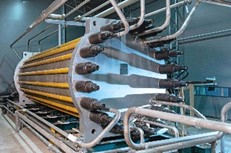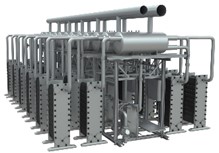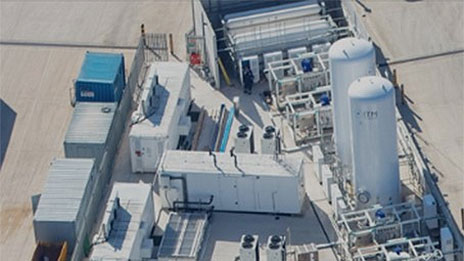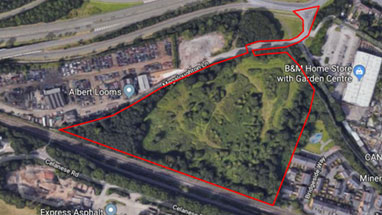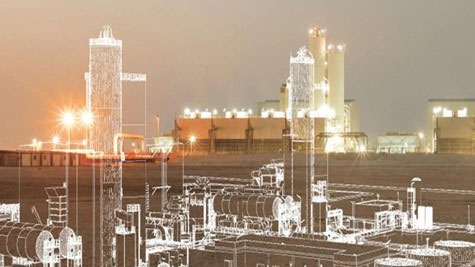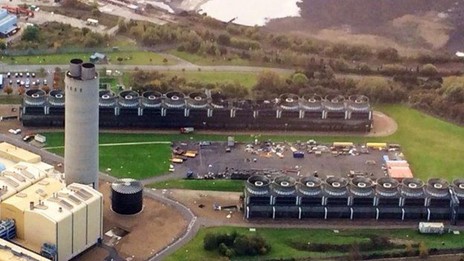Production
Understanding hydrogen production
A guide to hydrogen production for Local Authorities
01 Importance
Hydrogen is important to the energy transition as it offers a comparable alternative to conventional fossil fuels and can be produced with renewable sources. It promises to make fuel switching easier, especially in hard to decarbonise industries to help the Midlands transition towards net zero. Local Authorities should investigate the benefits of a hydrogen economy to achieve this goal locally.
The UK published its first hydrogen strategy in 2021 which plans to generate 10GW hydrogen capacity by 2030 for low carbon impact. The strategy was updated in August 2023.
To support the development of hydrogen production, the government set up the Net Zero Hydrogen Fund – NZHF fund in 2020 to encourage hydrogen projects with low environmental impact in two key areas. The first uses green electricity sources to generate hydrogen with zero emissions (Electrolytic) and the second captures and stores carbon to reduce emissions into the atmosphere (Carbon Capture Utilisation and Storage – CCUS).
A subsequent application and negotiation process through the Department of Energy Security and Net Zero (DESNZ) is used to shortlist funding applications. The first application round (Hydrogen Allocation Round 1 – HAR 1 created in 2022), has shortlisted the first group of successful applications. Negotiations are progressing with successful applicants to meet targets for 2025. The second application round, HAR 2, was announced in Q4 2023 with a particular focus on Electrolytic hydrogen production.
Timeline of possible hydrogen energy production
Key opportunities
The Midlands Engine has identified two key opportunities for hydrogen production in the region: large-scale hydrogen production from CCUS in the Humber, and Electrolytic hydrogen production at energy hubs in the region with potential to develop renewable energy.
What is electrolysis?
Electrolysis is a form of hydrogen production which is carbon-free because it uses renewable and nuclear sources. It splits water in hydrogen and oxygen.
What is carbon capture?
Carbon capture involves capturing carbon from industrial process and storing it either underground or in compressed storage.
02 How is hydrogen produced at scale?
Hydrogen is the lightest and most abundant element on earth; however, it cannot be found readily available in its molecular form and therefore needs to be produced from other molecules. Hydrogen is a high energy density gas with a net calorific value of ~120 MJ/kg, much higher when compared with ~45 MJ/kg for natural gas and kerosene.
Hydrogen can be produced through several methods, each of which is assigned a colour definition depending on the carbon intensity of the production route. To qualify as low carbon hydrogen, emissions must be less than 20gCO2e/MJ for all technologies.
The main hydrogen production methods are summarised below.
Hydrogen Production Methods
Currently, most hydrogen produced globally is grey, with an increasing number of producers considering carbon capture to produce blue hydrogen. Although green electrolytic hydrogen remains only a small portion of the overall market (around 1% of the hydrogen produced globally), it is expected to become dominant as renewable electricity generation grows. Moreover, it is projected that electrolytic green hydrogen will become the main and most cost-effective hydrogen production method.
Electrolyser technologies
There are three main electrolyser technologies with a technology readiness level of 9, meaning the technology has been proven: alkaline, proton exchange membrane (PEM) and solid oxide electrolysers. The technologies vary in their operating conditions and requirements and the quality of the hydrogen output in terms of purity and pressure, impacting how they can be used.
The development of low carbon hydrogen technologies, including the abovementioned and others, continues with a focus on increasing size and scale and reducing cost (CAPEX and OPEX).
04 Opportunities
There is clear potential to develop local hydrogen generation in the Midlands with many sites available for redevelopment. However, the landlocked nature of the region will likely limit production to small – medium distributed production plants powered by local renewable energy generation.
Imported Hydrogen
Brownfields and former industrial assets in the region present an opportunity to develop local green hydrogen generation. The redevelopment of former coal power station sites as demonstrated by the proposed Green Hydrogen Production Plant at the High Marnham Site and the proposed development at Ratcliffe-On-Soar power station site, potentially offering in the hundreds of MW of hydrogen production to the industry in the region.
Production Potential
National Grid’s Distribution Future Energy Scenarios (DFES) estimates the potential for hydrogen production in the Midlands from water electrolysis to reach 1.26 TWh per year by 2050. The map below shows potential sites for hydrogen production in the Midlands by 2050 based on the Hydrogen Valley analysis.
Distributed green hydrogen production plants can be developed in the Midlands utilising onshore wind and solar resources, and capitalising on the rich biomass resource in the region.
Production Sites
Hydrogen will likely be imported from regions with higher low-carbon hydrogen generation potential, namely, East Coast Hydrogen and the Bacton Hub. The creation of the East Midlands Hydrogen Inland Cluster lends new strength and leadership to the opportunity.
Opportunities for hydrogen production
The industrial heritage and infrastructure in the region offers an opportunity to develop the supply chain for materials and components required for the manufacturing and development of hydrogen production systems and plants in the UK. The information below highlights important components required for green hydrogen production sites that could be developed in the Midlands.
Potential sites for hydrogen production overlap with supply chain initiatives
The supply chain development for hydrogen production in the region can be supported by the strong academic and research activity occurring on hydrogen in the region.
05 Support
How can Local Authorities support the development of hydrogen production?
Hydrogen promises to be a significant contributor to the future fuels mix for both domestic and commercial consumers. Local Authority leadership must look to promote and enable a transition which ensures sustainability and wellbeing, future proof services and infrastructure as well as an attractive ecosystem for retention of existing industries and sustainable growth.
Considerations for Local Authorities
Region based vision and strategy
using credible evidence which lays out strategic objectives specific to hydrogen production and promotes regional alignment.
Foster partnerships with the private sector
These partnerships can be used to jointly identify opportunities, support funding applications, raise awareness and lobby government.
Identify opportunities for hydrogen off-take
A collaborative aggregation exercise can be used to demonstrate that there is credible demand potential at scale.
Deploy local development plans
Local Authorities can identify plots of land within their region suitable for green hydrogen production, ensuring that these locations have access to the required utilities of electricity and water.
Facilitating and reducing the processing time of the planning applications
for hydrogen production sites either through local development orders or enterprise zones.
To help decarbonise the grid and create local generation within the region
Hydrogen can be produced at competitive costs during off-peak electricity demand using curtailed electricity.
Supporting local industry, SMEs and supply chains
to develop components required for hydrogen production systems.

